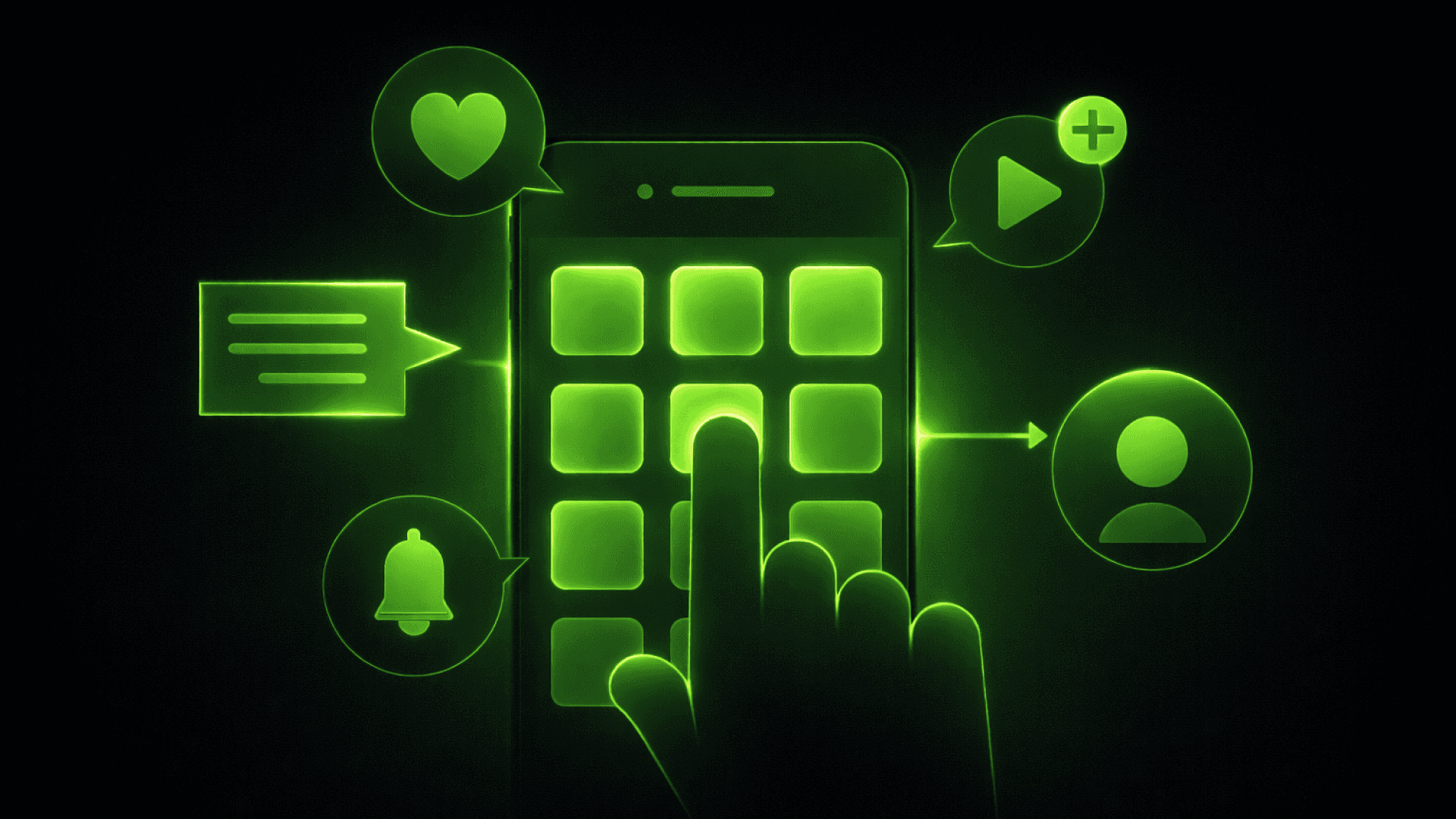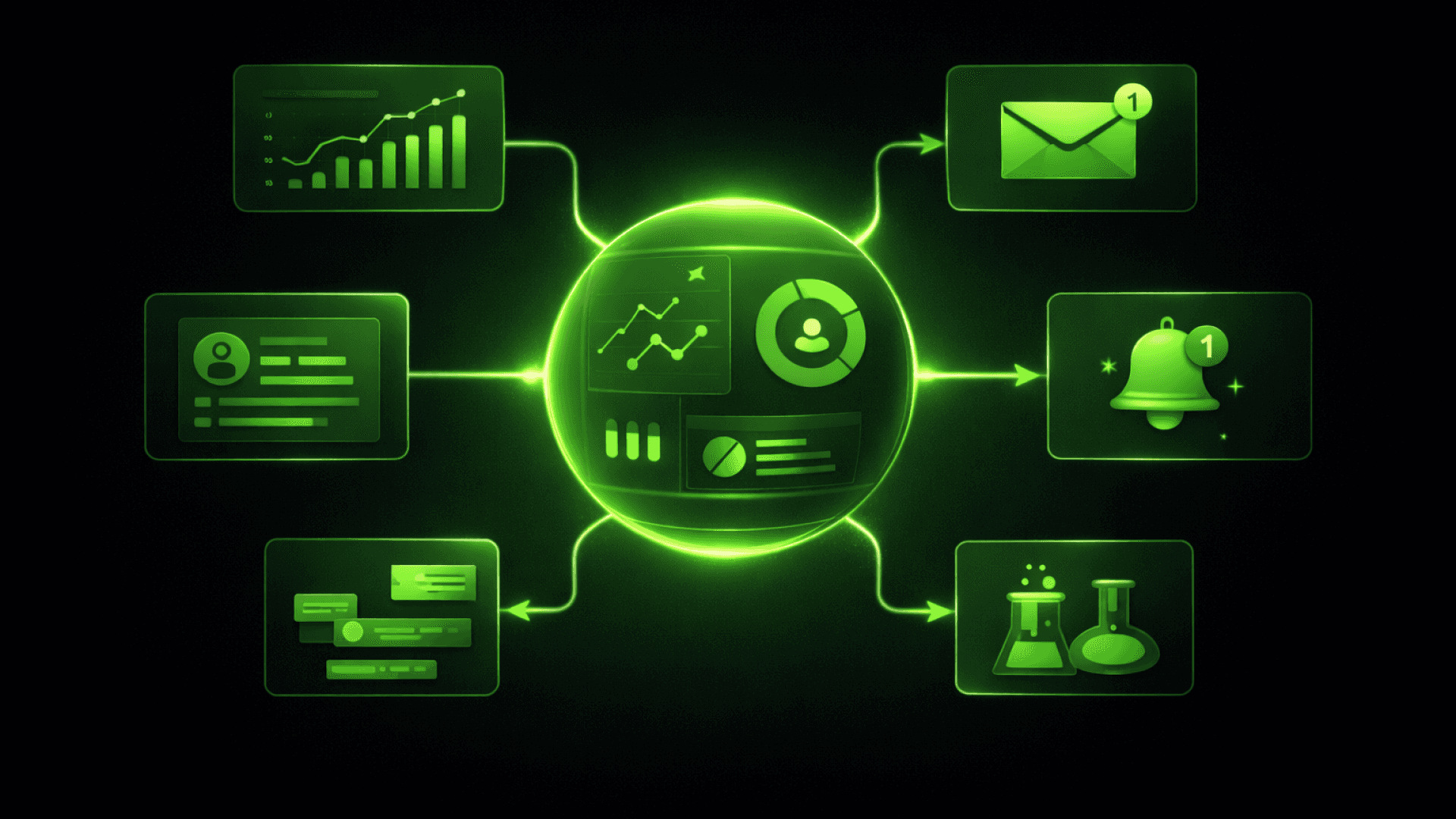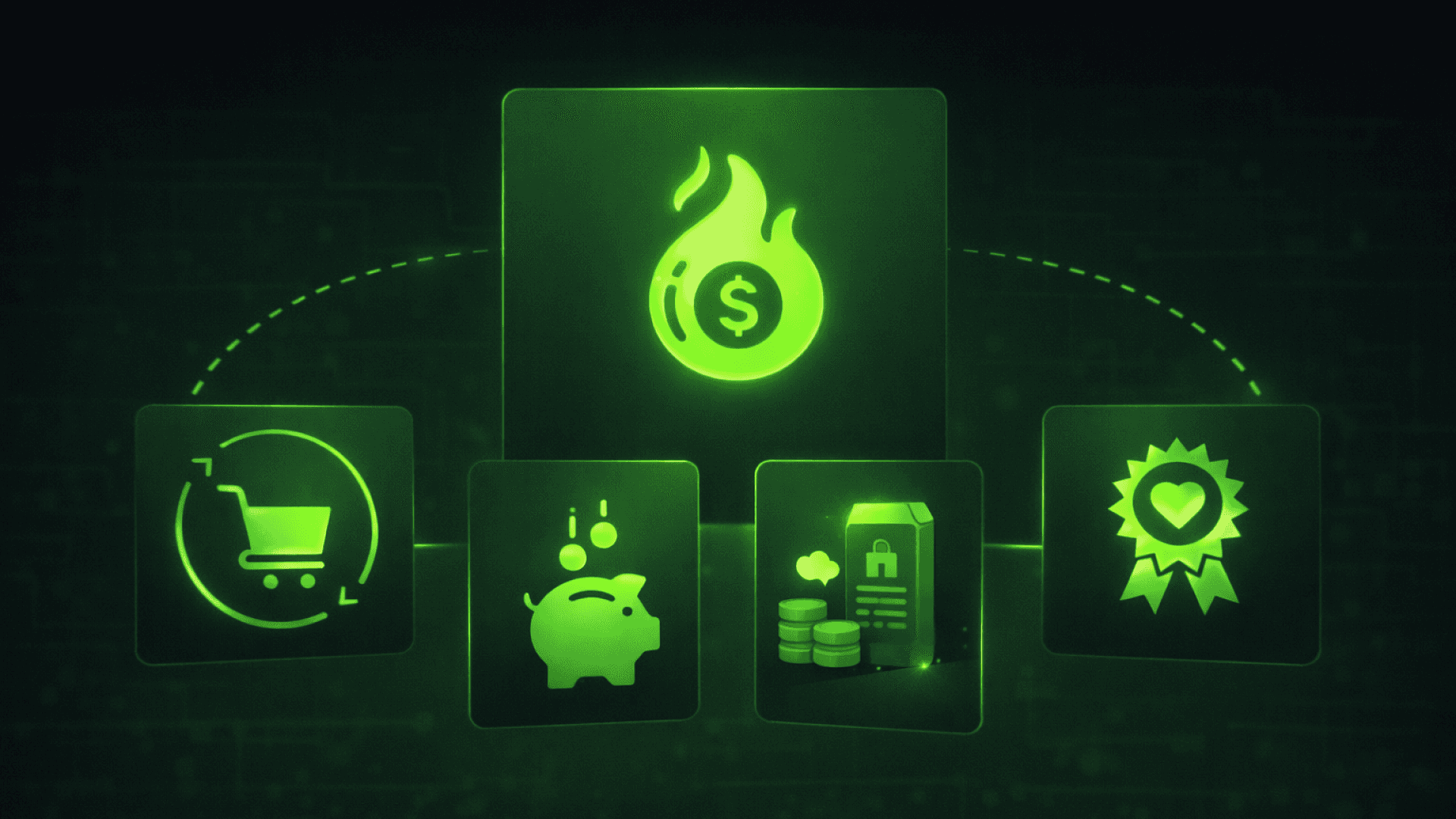Let’s be honest - most loyalty programs still feel like they’re stuck in 2012.
Sign up, earn points, forget you ever joined. No connection and no reason to care.
Launching a new loyalty program in 2025 isn’t about features. It’s about feeling like it belongs.
Customers have changed. They’re not chasing rewards, but rather looking for relevance.
According to Deloitte, modern consumer loyalty trends show that 73% of people stay longer with brands that understand their preferences, behaviors, and identity.
This shift didn’t happen overnight - it came from years of smarter apps, privacy concerns, and a demand for personalization that feels right.
Now it’s 2025 - and loyalty is no longer about “retention.”
It’s about showing up with the right message, in the right moment. Not a sales push, but a signal you care.
Still sending points and promo codes? You're not behind, you're invisible.
From Points to Personalization: How Loyalty Is Evolving
There was a time when loyalty meant birthday discounts and punch cards.
It was simple. And for a while, it worked.
But today, expectations are different.
People want brands to recognize, not simply reward.
They’re used to Spotify curating playlists before they ask. Netflix recommending what they didn’t even know they wanted.
So when a loyalty program feels one-size-fits-all - they tune it out.
In 2025, points aren’t dead. They just aren’t enough.
What matters is context.
Knowing if someone prefers a nudge in-app or no message at all.
Offering early access to gear for runners - instead of a generic 10% off. Across categories, consumer loyalty trends show that recognition beats repetition - and relevance drives retention
According to Euromonitor, emotionally intelligent loyalty strategies lead to longer engagement and stronger spend - not because they’re clever, but because they feel natural.
Great brands don’t talk about personalization. They deliver it - quietly. They notice when someone skips a step. Or pauses a subscription.
And instead of sending a “we miss you” email, they offer something that fits - now.
That’s the shift: Less about rewards, more about relevance.
10 Loyalty Program Trends to Watch
In 2025, loyalty isn’t a feature.
It’s a feeling - built through design. Loyalty program trends 2025 show that emotional relevance and frictionless design are becoming essential, not optional.
These loyalty programs trends reveal where real engagement is heading - and what outdated models are leaving behind
1. Instant Rewards and Real-Time Gratification
Nobody wants to wait six months for a free coffee.
Loyalty needs to feel immediate.
Book a hotel? Get an upgrade code instantly.
Refer a friend? Cashback lands before the thank-you text.
This isn’t just about speed - it’s about response.
Short feedback loops keep people engaged - no balance check required.
Forbes notes that real-time rewards are a top driver of emotional loyalty in retail - because they connect action to benefit without delay. Loyalty trends 2025 emphasize simplicity, speed, and emotional connection across every interaction.
2. Personalization Powered by AI
Loyalty marketing trends in 2025 go beyond personalization - they’re about timing, tone, and context. Loyalty engines pay attention to how people behave - not just what they buy:
– Do they skip emails but click app alerts?
– Do they browse weekly but only buy monthly?
When AI is used for loyalty, brands report significantly higher redemption and engagement rates - not because the tech is flashy, but because the timing finally feels right.
Personalization doesn’t feel invasive when it actually helps.
3. Tiered Models with Flexible Rules
Tiers still work - but rigid ones don’t.
Today’s best loyalty programs don’t just reward status - they give people a say.
Some pick speed. Others want early access.
The point is: choice matters more than rank.
And when the rules flex with real life, people stick around.
Flexibility = ownership.
And when users feel like they’re in control, they’re more likely to stay.
4. Loyalty That Mirrors Real Life
People don’t want generic perks.They want rewards that get them.
– A banking app cheers small saving wins
– A fitness app celebrates your 30-day streak
– A retail brand lets you donate your discount to a cause you care about
It’s less about “thanks for buying” - more about “we see you.”
As the Forbes Tech Council notes, the big shift isn’t about bigger rewards. It’s about making loyalty match your values.
5. Strategic Brand Collaborations
In 2025, loyalty isn’t something brands build alone.
Picture this:
Your health tracker unlocks perks at your grocery store.
Your airline miles work for your streaming plan.
These aren’t gimmicks. They’re bridges - connecting the brands people already use.
6. Mobile-First Loyalty Experiences
Nobody scrolls through inbox folders to find a promo code.
If your mobile loyalty experience isn’t seamless, it’s already behind
Today’s best programs are built for small screens and real lives:
– Geo-prompted offers when you enter a store
– In-wallet rewards that don’t require another app
– Push alerts that make sense, not noise.
In 2025, loyalty isn’t something you log into.
It’s something that lives in your pocket.
7. Gamified User Engagement
You don’t need a scoreboard.
You need a reason to come back.
In 2025, the smartest loyalty programs use gamification strategies to spark action — without overwhelming the experience.
Think progress bars. Streaks. Surprise unlocks.
Nothing flashy. Just simple tools that make small actions feel rewarding.
According to Forbes, game-inspired mechanics are helping brands boost engagement, especially when rewards feel earned, not handed out.
It’s not about turning your app into a game.
It’s about turning everyday behavior into forward motion.
8. Web3-Powered Loyalty Integrations
Web3 isn’t a trend.
It’s a new layer of how value moves.
In 2025, some brands are using tokens, smart contracts, and digital assets to rebuild how loyalty works - behind the scenes.
Not to impress. But to simplify.
– Blockchain makes rewards portable
– Smart contracts automate trust
– Customers gain ownership over what they earn
While not every industry needs Web3, those that do — like travel, gaming, or fashion — are turning to web3 loyalty programs to reduce friction and expand what rewards can mean.
As Forbes notes, loyalty tech is shifting from centralized to user-centric - and Web3 is one of the tools making that possible.
9. Privacy-Centric Personalization
Customers want relevance - not surveillance.
In a world where cookies are disappearing, loyalty is one of the few places where people choose to share.
But only if they feel respected.
2025 loyalty programs are moving toward:
– clear value exchange
– opt-in data models
– personalization that runs on transparency, not tricks
Euromonitor highlights privacy-first personalization as a key differentiator in loyalty.
Because trust isn’t a bonus anymore - it’s a baseline.
10. Integrated Customer Journeys
Loyalty isn’t a checkout feature anymore.
It’s part of the whole flow.
You get credit for reviewing.
You earn access by attending an event.
You get nudged - not spammed - when you’re slipping away.
That’s how brands in 2025 are creating connection loops, not just purchase cycles.
The most important trends in loyalty programs focus less on rewards and more on presence. When loyalty is woven into the journey, it stops feeling like a program - and starts feeling like a relationship.
Business Readiness for the Next Era of Customer Loyalty Trends
Most loyalty programs don’t fail because of bad execution.
They fail because they’re built in isolation, not into how customers move through a brand.
In 2025, fixing that means starting from behavior, not from benefits. The future of loyalty programs lies in creating systems that learn, adapt, and respond without adding noise.

Even trends in B2B loyalty programs show a move toward personalization and cross-system alignment.
Here’s what to focus on:
1. Build Ecosystems, Not Add-Ons
If your loyalty lives on a side page - or worse, in a PDF - it’s not ready.
Real loyalty shows up when it matters:
– after a second purchase
– when someone’s drifting
– during onboarding, not just after it
Don’t build a campaign. Build a system people grow with.
2. Use First-Party Data Like It Means Something
You probably don’t need more data.
You need to use what you already have - better.
Loyalty is one of the few places where people expect you to know them.
Track patterns. Spot friction.
Respond when someone skips a step - or doesn’t come back.
It’s not about personalization for the sake of it.
It’s about real signals → real value → real time.
3. Integrate Across Systems - Or Don’t Launch Yet
If your systems don’t talk to each other, your brand doesn’t either.
CRM. POS. App. Support.
They all need to share context, or loyalty breaks.
If a reward disappears once, the customer does too.
Before you add a new perk, fix your foundation.
4. Align Around One Customer Vision
If your teams have different versions of the same person, loyalty won’t feel consistent.
Start by agreeing on what a “loyal customer” actually looks like.
Then align:
– What matters?
– What gets rewarded?
– What do we track?
When everyone plays from the same map, the experience feels whole.
5. Make Loyalty Part of the Product
The best loyalty isn’t activated - it’s embedded.
It makes the product smarter, not more complicated.
Think how Spotify recommends before you ask.
How Amazon Prime just... works.
It doesn’t interrupt. It fits.
That’s the standard in 2025: loyalty that blends into the flow - and adds to it.
6. Train Teams to Deliver
You can automate perks.
But trust comes from people.
In 2025, real loyalty shows up when:
– support goes off-script
– store teams remember names
– sales follows up to check in, not sell
If your people don’t get it, no system will fix that.
7. Treat Loyalty as a System, Not a Campaign
Campaigns are loud. Loyalty should be steady.
Brands that get this right in 2025 don’t wait for churn to act.
They build quiet, running systems:
– onboarding that learns
– perks that adapt
– re-engagement that doesn’t beg
The goal? Make loyalty feel less like a feature - and more like part of the brand.
Loyalty Innovation by Industry in 2025
There’s no one-size-fits-all loyalty model anymore.
What works in banking won’t work in travel.
What makes loyalty work in 2025? Depends who you ask - and what they need, when.
Let’s look at how different industries are making loyalty their own.
Retail & eCommerce
In retail, loyalty isn’t about how much you spend - it’s about how it fits into your day.
The best programs don’t interrupt. They move with you.
Winning brands offer:
– personalized offers, no inbox digging
– early access for repeat buyers
– rewards tied to real actions (like reviews or reorders)
Forget dashboards and fine print.
Loyalty here is about removing effort - and showing up when it counts.
Airlines & Travel
It’s not about miles anymore.
It’s about feeling recognized.
Today’s top programs don’t reward flights. They reward behavior:
– upgrades tied to habits
– instant perks at booking
– small gestures for app check-ins or trip planning
In this space, the best reward is being understood.
When the journey feels easier - loyalty follows.
Financial Services
Loyalty in finance isn’t flashy.
It’s about trust and confidence.
Strong programs support real progress:
– rewards for consistent saving
– benefits that adjust with your life
– insights that show up when you need them
Euromonitor notes that financial brands building emotional loyalty - not only transactional perks - see higher retention.
The win? Feeling supported - not sold to.
Digital Subscriptions
Retention is the business model.
Top subscription brands in 2025 treat loyalty as part of the product:
– content that adapts over time
– access that grows with use
– unexpected “thanks for sticking with us” moments
It’s not about locking users in.
It’s about making staying feel like the better option. Digital loyalty trends in 2025 are all about one thing: make it seamless, make it timely, and don’t make people think.
When the experience improves the longer you’re there - so does loyalty.
Mobile Apps
Loyalty on mobile isn’t about long-term engagement.
It’s about next-session momentum.
Effective apps reward:
– consistent check-ins
– feature exploration
– progress over time
The goal isn’t to gamify.
It’s to make people feel like something moves when they do.
In a swipe-and-leave world, loyalty is about giving users a reason to return.
Technology That Drives Loyalty Program Trends
Tech doesn’t build loyalty.
But it makes loyalty possible - at scale, in real time, and without friction.
And in 2025, the best loyalty programs don’t rely on features.
They rely on foundations.
CDPs and CRM Enhancements
Customer Data Platforms aren’t new.
But now they’re finally doing their job - not just collecting, but connecting.
They organize behavior, surface patterns, and hold back when silence is smarter.
Because sometimes, loyalty means not sending that email.
That’s not minimalism - that’s precision.
Loyalty Platforms That Don’t Feel Like Work
If your loyalty system needs a manual, it’s already too much. The best tools in 2025 are modular, lightweight, and built to move. API-first, friction-free, and invisible when they need to be.
When loyalty works - across app, store, and inbox - people don’t notice the system. They feel the result. That’s scale without stress.
Smart Contracts (When They Make Sense)
Blockchain still isn’t magic.
But in the right hands, it simplifies what used to be clunky:
– reward transfers
– fraud prevention
– instant fulfillment
And when customers can see their value, hold it, even move it -
That’s not a gimmick.
That’s ownership.
Machine Learning for Predictive Loyalty
It’s not about recommending socks.
It’s about learning patterns:
– who drops off and when
– what leads to long-term value
– which offers feel timely, not random
When AI gets loyalty right, it doesn’t feel like AI. It feels like the brand is paying attention.
That’s the trust layer no campaign can fake.
The best loyalty tech in 2025 doesn’t talk big. It just makes everything feel smoother.
That’s not a feature set, but the new expectation.
Steps to Build a Future-Proof Loyalty Strategy
Most loyalty strategies still start with the same old playbook: points, tiers, perks. Customer loyalty trends 2025 point toward dynamic programs that evolve with user behavior, not just static reward tiers. Сlients in 2025 are tuning that out. They’re not asking for more features. They’re looking for relevance — and a reason to stay.
Here’s how the smartest brands are building loyalty that actually lasts.
Evaluate What Customers Truly Value
You can’t win loyalty if you don’t know what people care about. Not just what they buy — but what they expect.
Watch what they repeat. Notice what they skip. Ask better questions, and listen without assumptions.
Because value isn’t always in the transaction. It’s in the behavior behind it.
Simplify Loyalty Mechanics
If it feels like work, it won’t feel like loyalty. People don’t want to decode a program. They want it to make sense in a glance.
No PDFs. No hoops. Just a clear reason to engage — and an easy way to win. In loyalty, friction kills momentum. And as BCG confirms: frictionless tech = better retention.
Test and Iterate Quickly
Think like a product team, not a promotions team.
Shift a message. Change a trigger. Move a reward forward two days.
Then watch what happens.
Great loyalty systems don’t wait for quarterly reports — they evolve in real time.
Invest in Scalable Technology
Start small — but build like you're going big. Ten thousand users today? Plan for ten million tomorrow. Modular systems. Real-time data. Tech that fades into the background and just works. Because if your loyalty stack can’t grow, your audience won’t either.
FAQs
What do customers expect from loyalty programs in 2025?
They expect relevance — not more noise. It’s not about piling on points or promotions. It’s about showing up at the right moment with something that fits. According to Euromonitor, emotional loyalty is no longer optional — it’s the baseline.
Is emotional loyalty stronger than transactional rewards?
Absolutely. Points expire. Discounts get ignored. But when people feel seen, they stay. Emotional connection outlasts any temporary perk.
How does AI fit into loyalty?
AI doesn’t just personalize offers — it pays attention. It notices what matters: when to speak, when to stay quiet, and how to adjust tone and timing to feel relevant, not robotic.
What technologies actually help loyalty work?
The best tech disappears into the experience. Real-time CDPs, connected CRMs, background machine learning — these tools don’t get in the way, they get things done. As BCG notes, less friction equals more retention.
What do Gen Z and Gen Alpha expect?
Control. If they can’t shape the experience, they’ll opt out. If they feel surveilled, they’ll walk away. But when it fits how they already live — flexible, fast, and fair — they lean in and stick around.
Conclusion
Loyalty in 2025 isn’t a banner, a bonus, or a balance. It’s a signal. It’s how you show up — at the right time, in the right way, without making it feel like a transaction.
Yes, points still work. But relevance is what truly sticks. As customer loyalty program trends 2025 evolve, brands must prioritize integration, personalization, and minimal friction above all.
The brands that win don’t just “launch” loyalty — they live it.
Because when loyalty becomes part of the product — not the pitch — people notice. And they stay.
It’s no longer about building a program.It’s about keeping a promise — delivered consistently, and without asking.
Build Smarter Loyalty
See how Enable3 helps you launch and scale loyalty that actually sticks.







